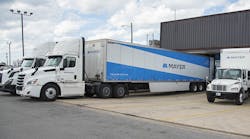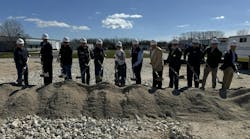1.1 million
Entergy customers in Louisiana and Mississippi that lost power because of Hurricane Katrina, the worst storm in the utility's history.
611,000
The number of Entergy customers in Louisiana, Texas, Arkansas and Mississippi that lost power because of Hurricane Rita, making it the second-worst storm in the utility's history. Before the 2005 hurricane season, the highest number of Entergy customers who lost power from a storm was 260,000 during Hurricane George in 1998.
+20 percent
Prices have increased 20 percent for PVC pipe after the storms, and they were already climbing before the hurricanes because of increasing demand from a healthy construction market. But after Hurricanes Katrina and Rita knocked out several factories that produce ethylene and chlorine — two key components needed to manufacture PVC pipe — pricing really went wild. One industry executive says he has never seen market conditions like this in 40 years in the business.
+10 percent
Expect the cost of key construction materials such as cement, steel, copper, gypsum, and petroleum-based products to increase an average of 10 percent next year, according to Ken Simonson, chief economist for the Associated General Contractors, Alexandria, Va. Before the storm, Simonson was forecasting an increase of 6 percent to 8 percent.
416,894
The number of housing units (single-family, multi-family and manufactured homes) that a Sept. 18 Red Cross disaster assessment says were uninhabitable and beyond repair. In addition, the Red Cross says nearly 85,000 units suffered major damage and 130,000 incurred minor damage. Louisiana was hit the hardest, with 348,000 units destroyed and another 43,000 damaged, according to that assessment.
7,000
The number of utility linemen that Entergy rounded up before Hurricane Rita hit to work on the recovery efforts. At press time, the utility had more than 15,000 workers repairing the damage.
31
Home Depot had 31 of its 33 stores in Louisiana and Mississippi open one week after the storm. Paul Raines, president of the company's Southern division, learned from his experiences managing Big Orange's stores in Florida during last year's hurricanes. Electrical distributors can learn a thing or two about disaster recovery from Home Depot. According to a recent Fortune magazine article, Raines loaded up the company's Gulf Coast locations before the storms with chain saws, water, plastic gasoline containers, tarps, buckets and other supplies that would be needed in the recovery. He also had generators in place at these locations, and even had rooms booked at area hotels for the workers that would come to help out on the Gulf Coast from Home Depot locations in other regions. Raines has plenty of experience in disaster recovery. According to that article, before coming to Home Depot he ran stores in Latin America during civil wars, kidnapping and blackouts, a Peruvian currency crisis, and a typhoid epidemic that incapacitated a third of his employees.
35,000
GE Consumer & Industrial's appliance plant in Decatur, Ala., is producing 35,000 16-cubic-foot refrigerators that the Federal Emergency Management Administration (FEMA) has ordered for its on-site trailers on the Gulf Coast.
1.5 million
Louisiana-Pacific Corp., Nashville, Tenn., is donating 1.5 million square feet of its oriented strand board (OSB) product for rebuilding efforts in Alabama, Mississippi and Louisiana. OSB, sometimes called chipboard or particle board, is among the building products most needed in the period following a natural disaster. Additionally, Louisiana-Pacific will immediately switch production at its Silsbee, Texas, mill from producing siding to manufacturing OSB structural panels, in order to help provide adequate and timely supply to customers in the aftermath of Hurricane Katrina.








